As far as castles are concerned, after the second Welsh war we’re into the biggest and the best. And the first on our Quest is Conwy, a staggeringly big and beautiful castle, complete with town walls which you can walk all the way around, even today. And Conwy has a great history to boot, not least in its involvement in the last Welsh war of the winter of 1294-5.
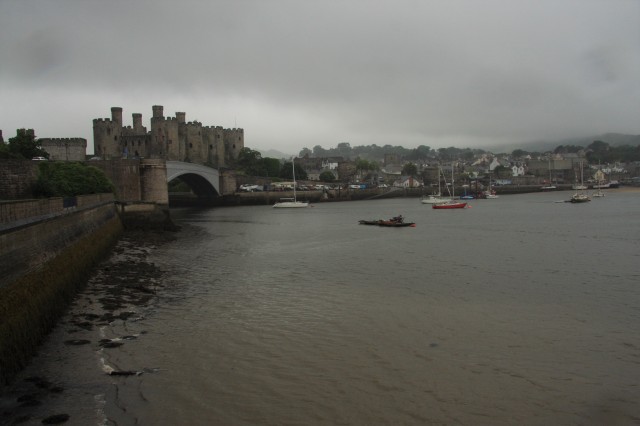
Conwy Castle stands in all its grandeur against a moody sky looking out over Conwy Bay
One of the best preserved medieval castles in the UK, the precise location of Conwy was chosen for more than one reason. Firstly, the plateau of rock on which it was to stand was surrounded by water on three sides, always a strategic location favoured by the king. But the placement was also a deliberate reminder not just that Wales was now under English rule, but that he’d triumphed over the Welsh ruling dynasty once and for all. The site had been a Cistercian abbey founded by Llywelyn’s grandfather, Llywelyn ap Iorweth, who during his rule had successfully expanded and consolidated his power in Wales, earning him the title of Llywelyn the Great. And as well as a working monastery, this abbey was the family’s ancestral burial place. But to hammer his point home, Edward demolished it and built his castle right on top of the bones of Llywelyn’s forebears, literally wiping them off the face of the Earth. This is why Llywelyn ap Gruffudd acquired the unenviable nickname of Llywelyn the Last. The abbey community was moved south to a new location at Maenan, where the remains of the church can still be seen today.
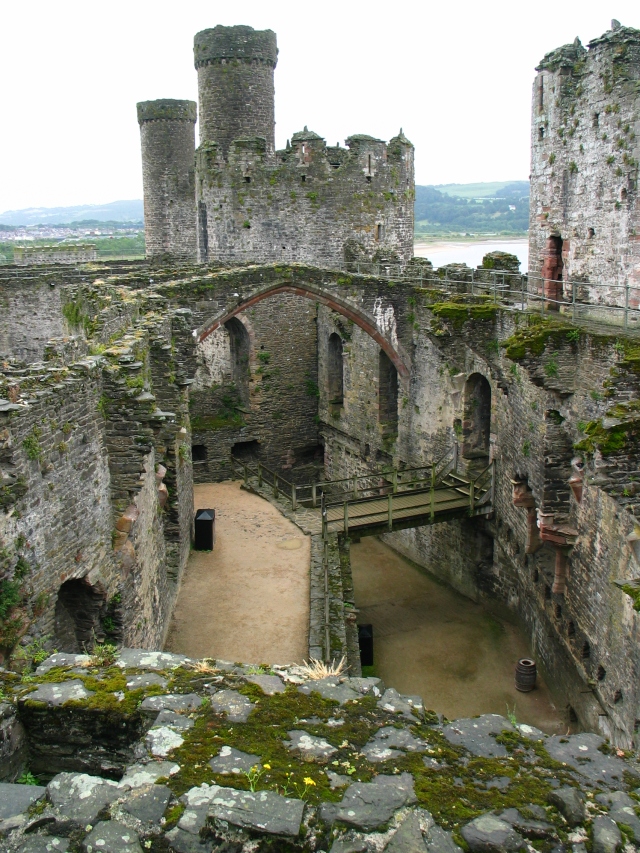
Looking down into the castle’s great hall with the chapel beyond
As one of the king’s new defensive ‘bastides’, work progressed apace with priority being given to the towers and curtain walls to ensure protection and security for the thirty garrison and constable Edward had put in charge. Under the direction of Master James of St George, the king’s master mason, the entire castle was completed within an astoundingly swift four years, using stonemasons and craftsmen brought in from every corner of England. The town walls were also being built by 1285 and by 1286 the castle was near completion. These were busy times for Master James, who now came into his own and produced his best work for Edward.
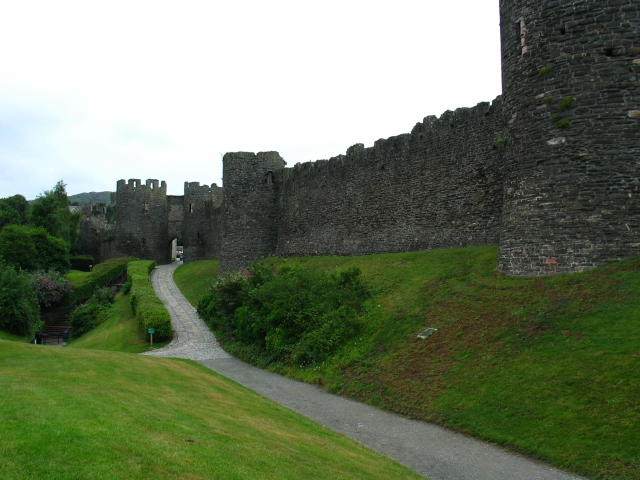
The town walls are the best preserved medieval examples in Europe
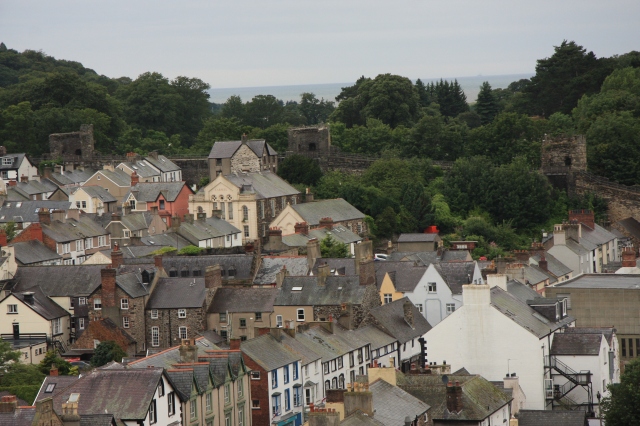
The view from the inside: the town with it’s surrounding walls
The castle was moulded to fit the slightly curved rocky outcrop on which it stands, with the obligatory access to ships supplied by the River Conwy and the harbour whilst providing effective water defences. And it was Edward’s insistence on these coastal locations that really paid off during the Welsh uprising led by Madog ap Llywelyn of the winter of 1294-5.
In December of 1294, as Edward marched across North Wales to crush the rebellion, he found himself cut off from the bulk of his supplies by an attack from the Welsh, and was forced to retire to Conwy with around 8000 of his men, where he spent Christmas. Everything now relied on the strength of the castle and Edward’s ability to keep the army alive during a particularly severe Welsh winter whilst being besieged by the rebel forces.
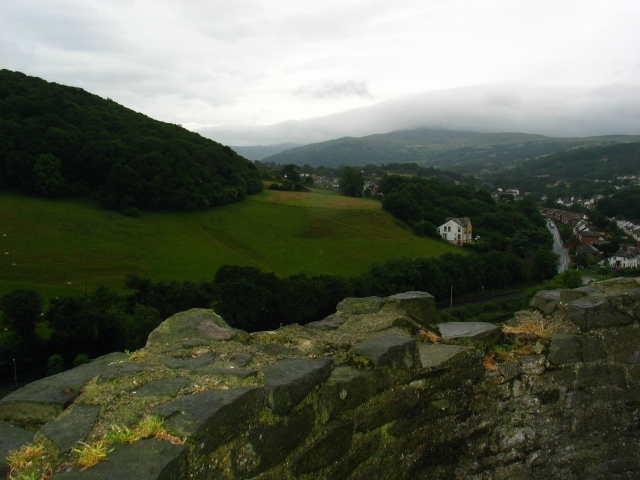
The wild Welsh landscape from the top of one of the castle’s many towers
Things looked very dicey for the king and his army holed up in the town of Conwy. A vicious storm was raging outside, cutting off all contact with his supply lines, so trapped by the enemy and severe floods, they found themselves running low on food. During this bleak mid winter, it looked as though perhaps the Welsh were finally going to gain the day and force Edward to surrender. An English chronicler, Walter of Guisborough, wrote a telling story of their miserable circumstances, when the last remaining barrel of wine set aside for the king was shared out among the garrison. He tells us: ‘They were saving this for the king, but he refused it, saying “In hardship, everything must be held in common, all of us must have exactly the same. As God watches over us all, I am the start and cause of all this, and I should do no better than you.” ‘ The words could have come straight from the mouth of King Arthur himself, Edward’s hero and ultimate role model.
In the event, the hardship was to ease when the storm and floods abated and contact with the main army was re-established. Ships were brought straight to the castle walls from all over England and as far away as Gascony, and the king’s stores were well restocked with grain, fish, meat and vegetables to feed the army languishing within. Now the king could sit pretty until the rest of his army arrived and victory looked certain. The soldiers did so well out of the shipped-in supplies that in the end the excess was being sold off cheaply before it went off. A resounding success for Edward.

Exceptional views in every direction…
But now we must turn to the magnificent castle itself, which worked its magic on me as I wandered around its extensive walls. You need many hours to explore the maze of passageways and towers which retain all the marks of comfortable accommodation. The Chapel Tower in particular has a roofed upper room, complete with fireplace, the back of which shows a montage of period castle life in film to the evocative sounds of a blacksmith’s hammer, Catholic mass in Latin and haunting medieval music. It felt so comfortable in here I was ready to move in.

At home in the Chapel tower room
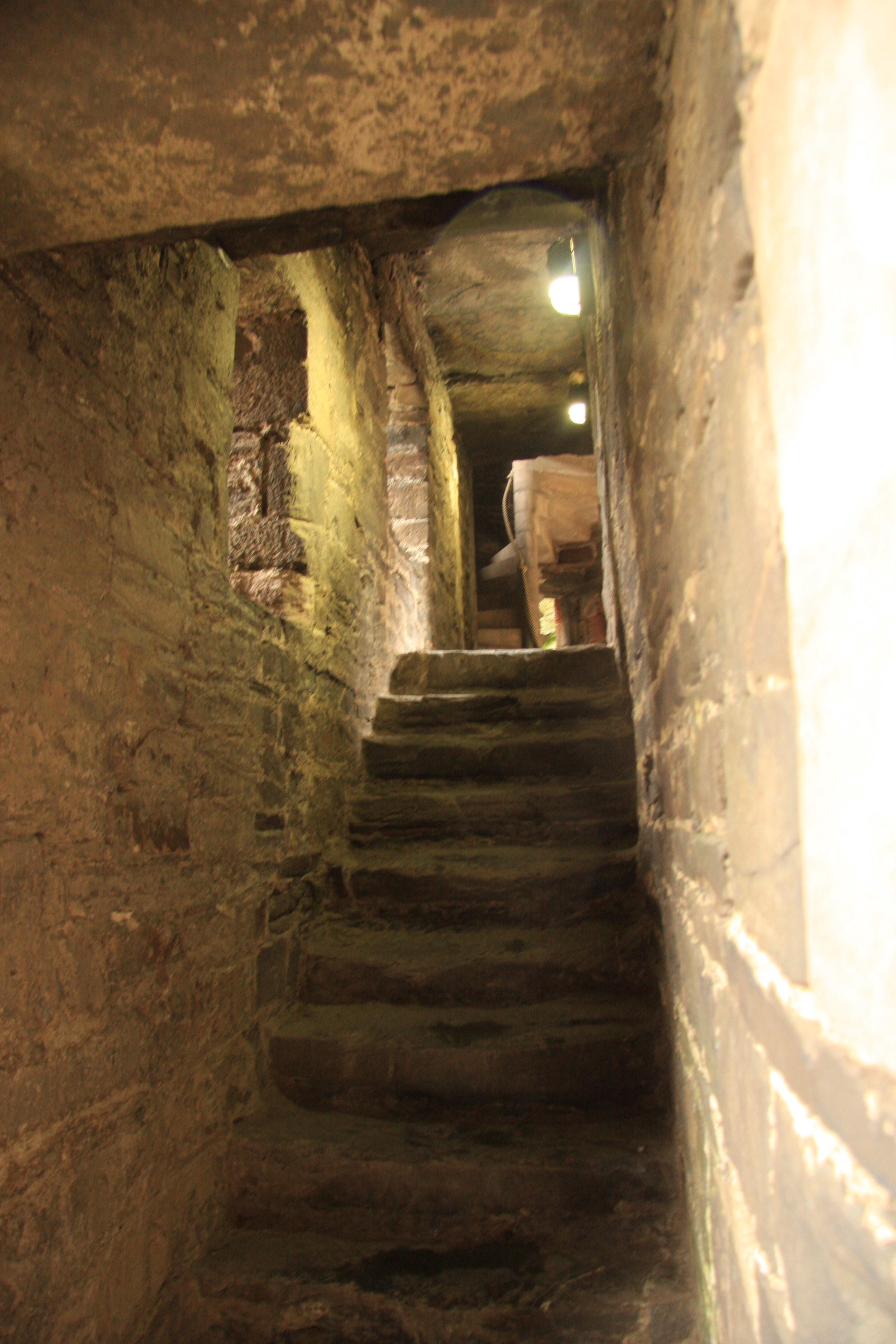
A maze of rooms and intramural passageways to explore
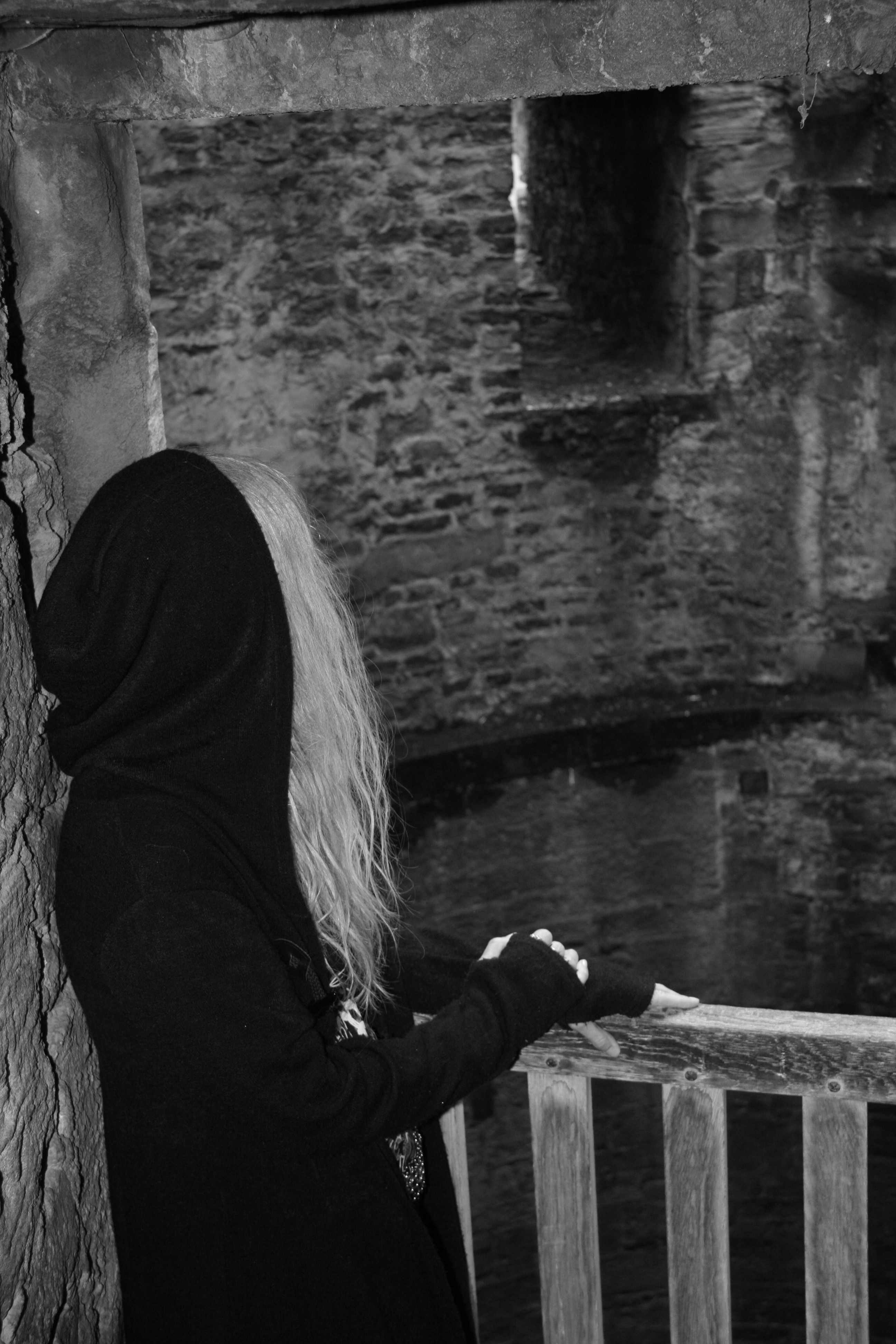
Admiring a tower from the inside…
But the really unique thing about Conwy comes in the shape of the Royal Apartments situated in the eastern inner ward, protected by four massive towers and an outer barbican. And what luxurious accommodation it once was, with private apartments for the king and his family, the extent of which can be seen in the remnants of tracery around the windows, generous fireplaces and fine views over Conwy Bay.
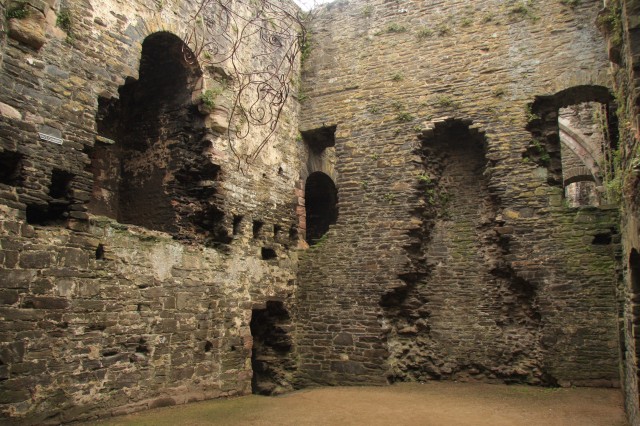
A ghostly king’s head looks down into his great chamber in the private apartments
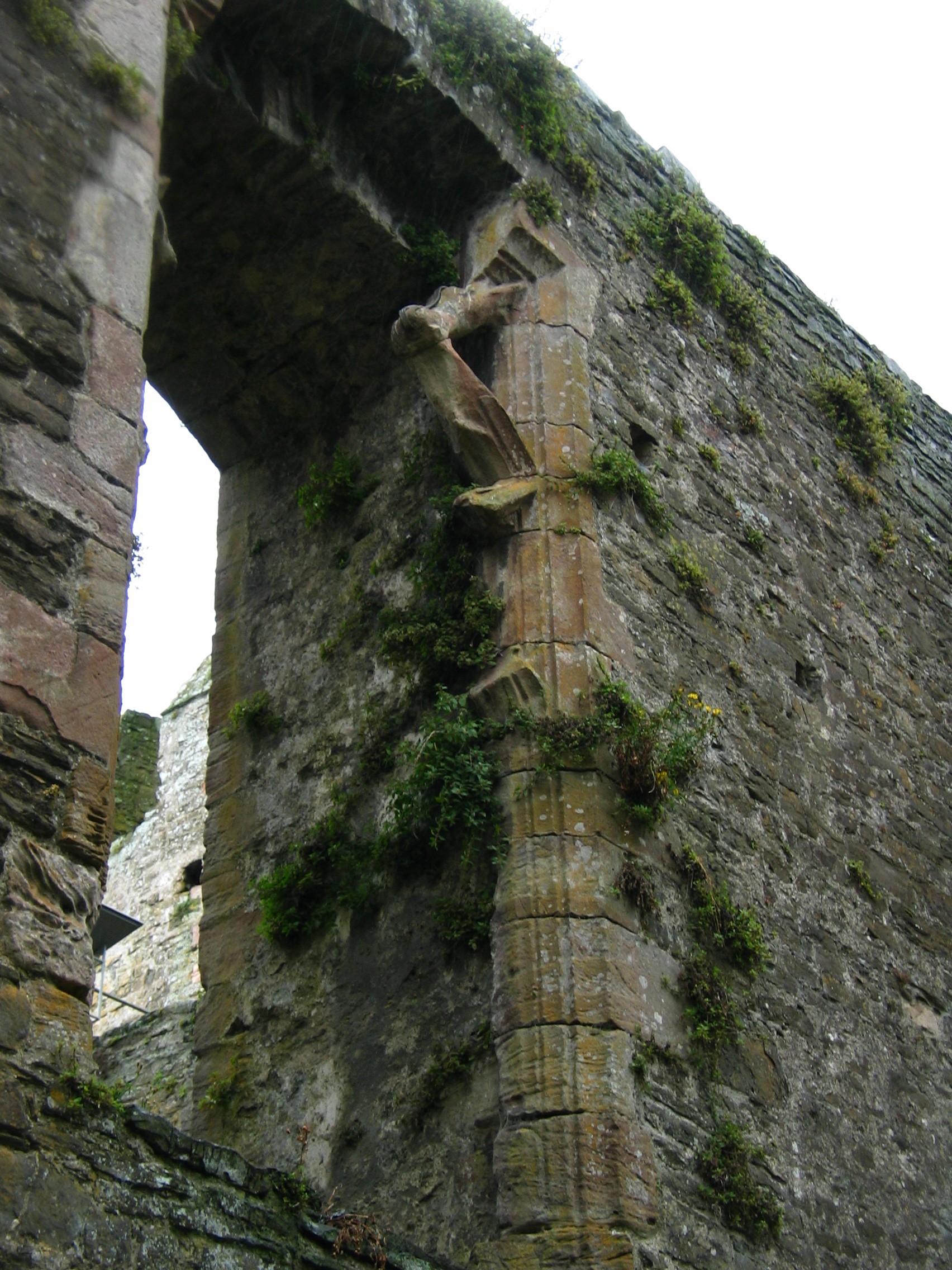
The remains of fine tracery in the windows show the level of luxury that once graced the king’s private apartments
It was with great reluctance that I eventually extricated myself from the palatial fortress that is Conwy. The castle and its intact town walls, the best preserved medieval examples in Europe, are like a little kingdom of their own, and any visit there will leave a Castle Quester feeling they’d really found what they came for.
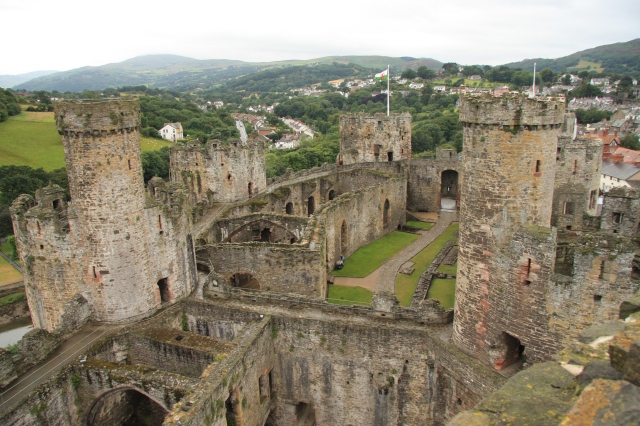
What a castle – the view from the king’s residence
But Conwy, of course, wasn’t the only castle built in the aftermath of the second Welsh war, and we have two more fantastic fortresses to discover in this group. And so we began our long journey towards the next of Edward’s great castles – the king’s Plantagenet capital of his conquered lands, and his crowning glory – Caernarfon.
Wow! Another great post my Love – really interesting as always. I like the photo’s too – I bet you can guess which ones are my favorites ❤
LikeLiked by 1 person
I didn’t take any of the castle loos… 😉
LikeLiked by 1 person
Hahahahahahahaha!!!!! I still say there’s a book in that 😀
LikeLiked by 1 person
This has been so great! Thank you.
LikeLiked by 1 person
Thanks Martha. It’s a real beauty of a place. I’d happily move in there tomorrow… 🙂
LikeLike
wow – such an immense place – and I like the photo of you – adding a picture always brings a personal touch to the history post.
and this was a nice thing to read
“everything must be held in common, all of us must have exactly the same.”
sounds like wisdom…
LikeLiked by 1 person
Thanks, Yvette. Immense is right. It’s an amazing castle with some pretty amazing stories. Glad you enjoyed it. 🙂
LikeLiked by 1 person
Fabulous post, Alli…and the pictures are wonderful.
I was particularly taken with the reported words of the king and the Arthurian connection…it sheds a lot of light on why men would follow a leader. Love, fear, duty and respect…it was personal. We seem to have lost that.
LikeLiked by 2 people
Sadly true, Sue. Thanks for your kind comments, and I’m so pleased you enjoyed revisiting Conwy castle with me. It is more than a bit special. 🙂 ❤
LikeLike
It really is o e of ghe most impressive and atmospheric castles I know.
LikeLiked by 1 person
I can’t argue with that! It is indeed. 🙂
LikeLike
Im glad you deciphered what predictive text managed to send! 😀
LikeLiked by 1 person
It comes from years of experience! 😉
LikeLike
😀 😉
LikeLike
Another great post Alli. Isn’t very well preserved for its age. I hope I hold up as well !
LikeLiked by 1 person
It’s a gorgeous castle to wander around. And would that we all did that well at nearly 750 years old! 🙂
LikeLiked by 1 person
One thing struck me whilst enjoying your Conwy visit …the navy as was! I wonder how developed and effective it was back then. 🤔. Enjoy the brilliant scenery and countryside as you wind your way to Caernarfon😅😅😅
LikeLiked by 1 person
Thanks David, glad you enjoyed revisiting Conwy. As you can probably tell, I did too! The navy was going by then, begun by King John. I’ll have to ask my maritime historian daughter about it! 🙂 Fabulous views yesterday on our long stretch – photos later – and another long one today before reaching Caernarfon tomorrow. Can’t wait. 🙂
LikeLike
There aren’t many castles like Conway I don’t believe, and you’ve done a great job of telling and showing us what it’s like.
It’s obviously not as hot as it was if you’ve taken to wearing a coat now 🙂
LikeLiked by 1 person
No, thank goodness, it’s lovely and cool. The rain we’ve had was welcome. Now it’s just sunny and mildly warm. Much better for walking, and castle exploring. 🙂
Glad you enjoyed Conwy. It’s a very special place. 🙂
LikeLiked by 1 person
Excellent account, Alli. I have forgotten pretty much everything from my one visit to Conwy years ago, though your super photos brought some of it back. As Edward might have said, I need to do more with Wales. Hope to catch – and catch up with – your other Welsh castle posts.
LikeLiked by 1 person
Thanks Mike. Glad to have refreshed your memory! It’s a gorgeous castle, and I hope you like the story leading up to it, and beyond. 🙂
LikeLike
I was trying to walk around the town walls at Conwy one cold winter – it was really icy and I had to give up as it was dangerous!
I was starting to hate the vengeful Edward until I read the bit about where he shared the last barrel of drink with his troops!
LikeLiked by 1 person
He wasn’t all bad, I promise you. He did a lot of good too. And he was a great friend to have, and a loyal husband.
Remind me not to try walking round the walls of Conwy in winter…
LikeLike
a great friend to have… but a terrible enemy!
LikeLiked by 1 person
Spot on. You understand him now. A fascinating and complex character. 🙂
LikeLike
It’s one of my regrets that I never got to visit this castle. If I were ever lucky enough to visit the UK again I think I’d be spending a lot more of my time in Wales and Scotland.
LikeLiked by 1 person
If you love castles that would be a very good move.😊 Northumberland is really stunning and good for castles too. Glad you enjoyed reading about Conwy. 😊
LikeLiked by 1 person
I like the north of England, I was born in the south. I have seen Durham Castle, that’s a good one too.
LikeLiked by 1 person
Oh yes, Durham is lovely too. We did that one last year. The south is very built up now, that’s why we’re planning on eventually living in Northumberland. 😊
LikeLiked by 1 person
This castle is incredible! It’s mammoth. Astounding that it was built in just four years and at a time when there was no mechanized assistance. Blows my mind.
LikeLiked by 1 person
It really is a stunner, Wendy. And it’s massive. A staggering feat of fast engineering for the day. Glad you enjoyed it. I did promise the castles get bigger and better… 🙂
LikeLiked by 1 person
I’ve wandered around here and really loved exploring, truly a beautiful setting. Lovely photos and write-up of the castle.
LikeLiked by 1 person
It’s a fabulous castle to explore. Glad you enjoyed re-visiting Conwy with me, Amy. 🙂
LikeLiked by 1 person